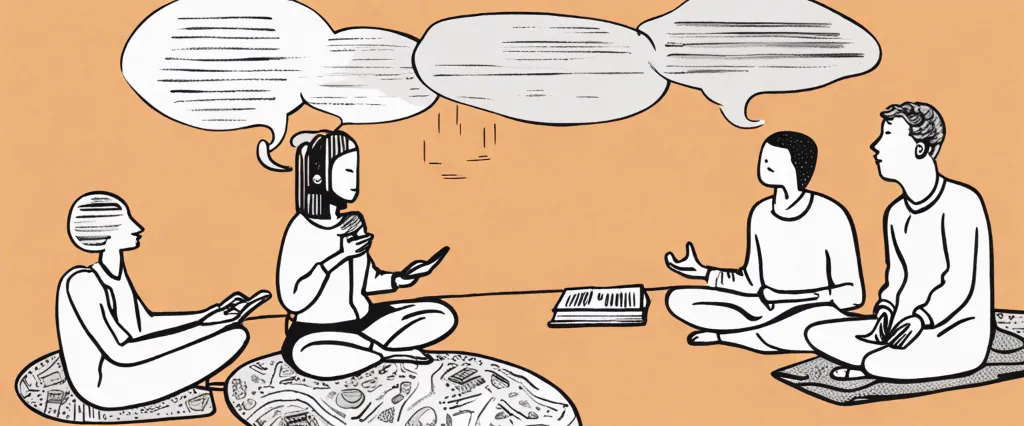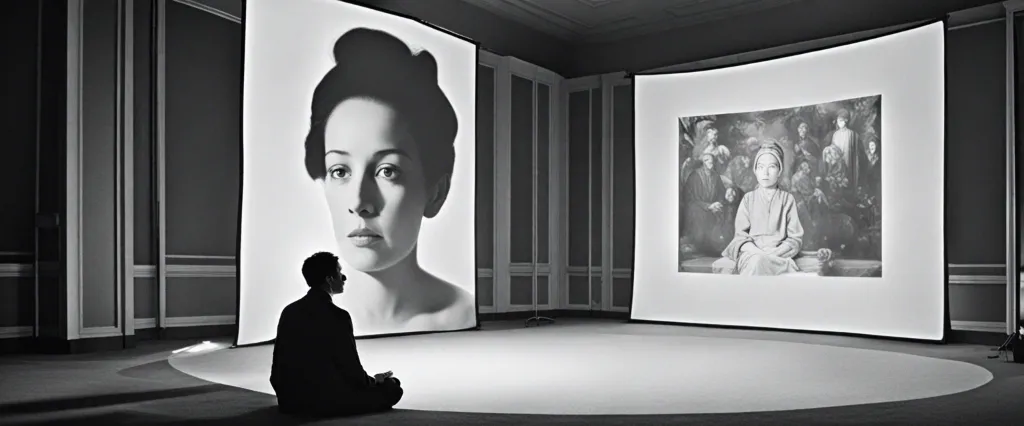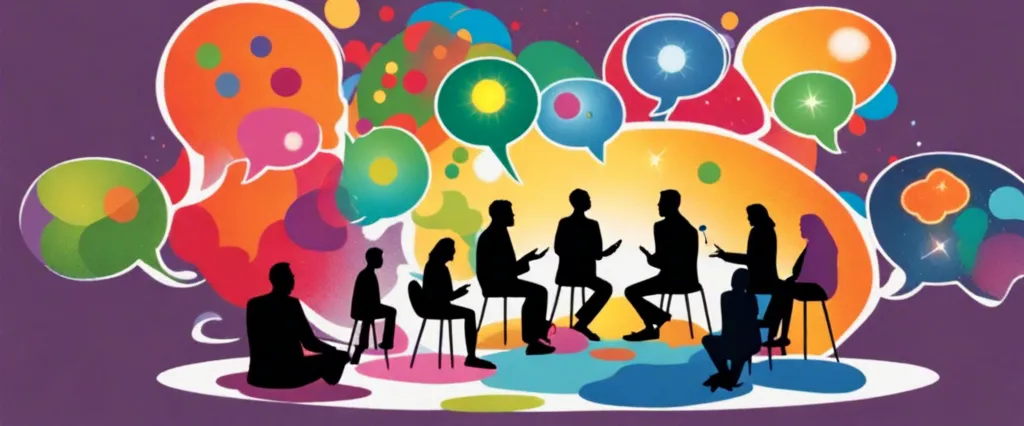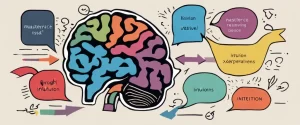——The Art of Communicating by Thich Nhat Hanh & The Magic Lantern by Ingmar Bergman

In the realm of literature and film, communication stands as the cornerstone of human interaction, bridging the gaps between individuals and fostering understanding. It is this universal need to connect that has intrigued countless writers and filmmakers, prompting them to explore the intricacies of communication and its profound impact on our lives. In this comparative study, we delve into two captivating works that provide unique perspectives on this subject: “The Art of Communicating” by Thich Nhat Hanh and “The Magic Lantern” by Ingmar Bergman.
Thich Nhat Hanh, a renowned Vietnamese Buddhist monk, philosopher, and peace activist, invites readers to embark on a reflective journey through his book “The Art of Communicating.” Drawing upon his spiritual wisdom and vast experiences, Hanh explores the art of genuine connection and compassionate communication. Harnessing the power of mindfulness, he emphasizes the importance of active listening, deep presence, and understanding one’s own emotions as the building blocks of successful communication. This contemplative guide offers a compassionate lens through which we can approach our interactions, illuminating the path for a more harmonious way of connecting with others.
In stark contrast, Ingmar Bergman’s “The Magic Lantern” presents a deeply personal and introspective exploration of communication through the medium of film. Bergman, a Swedish filmmaker widely regarded as one of the greatest auteurs in cinematic history, reflects upon his childhood memories, artistic journey, and the profound impact of cinema on his own abilities to express and comprehend the intricacies of human communication. Through his autobiographical musings, Bergman takes us on an emotional odyssey, unraveling the complexities of communication, self-expression, and the interplay between reality and illusion.
As we delve into these two works, we are presented with a unique opportunity to witness the convergence of different art forms – literature and film – as they share a common goal: to delve into the depths of the human experience, dissecting the nuances and challenges of communication. While Thich Nhat Hanh guides us toward a more compassionate and conscious way of relating to others, Ingmar Bergman’s introspection prompts us to question the veracity of our own communication and to explore the profound effects of art on our understanding of the world.
This comparative study delves into the ways in which “The Art of Communicating” and “The Magic Lantern” intersect, while simultaneously highlighting their divergent perspectives. Through their profound insights, we are invited to reflect upon the transformative power of communication and its indelible influence on our relationships, personal growth, and the fabric of society at large. In examining these works side by side, we embark on a journey that reveals the multifaceted nature of communication itself, stirring our curiosity and drawing us into a rich tapestry of interconnected narratives.
Brief Summary of Two Books
The Art of Communicating by Thich Nhat Hanh
“The Art of Communicating” by Thich Nhat Hanh is a profound and practical guide that offers insights on how to improve our communication skills in order to build more meaningful and compassionate connections with the people in our lives. Written by one of the world’s most renowned Buddhist monks and meditation teachers, this book provides a comprehensive understanding of effective communication in all aspects of life.
Thich Nhat Hanh emphasizes the importance of mindful communication, which involves listening deeply and speaking with kindness and clarity. He encourages readers to cultivate the art of deep listening, where one focuses their attention on the speaker without judgment or interruption. Through active listening, we can truly understand the other person’s feelings and needs, leading to more harmonious and authentic relationships.
The book also explores the power of loving speech, which involves using words that nourish, heal, and help individuals grow. Thich Nhat Hanh elucidates various mindfulness practices and exercises that can help transform communication patterns, such as calming the mind before speaking, using gentle language, and recognizing and transforming our own internal suffering.
Additionally, “The Art of Communicating” delves into the concept of interbeing, the understanding that we are all interconnected and that our well-being depends on the happiness of others. Thich Nhat Hanh illustrates how this awareness can guide our communication, enabling us to empathize with others and foster understanding and compassion.
Overall, “The Art of Communicating” is a transformative book that offers practical techniques and philosophical wisdom to enhance our communication skills. It provides a roadmap for creating authentic relationships, resolving conflicts, and establishing a more peaceful and loving world through effective and mindful communication.
The Magic Lantern by Ingmar Bergman
“The Magic Lantern” by Ingmar Bergman is an autobiography that delves into the life and artistry of the renowned Swedish filmmaker. Bergman takes the reader on a journey through his childhood, his early career, and the various struggles and successes he encountered along the way.
The book begins with Bergman reflecting on his strict upbringing and the influence of his religious father, which had a profound impact on his later works. He discusses his early experiences in theater and his transition to film, exploring the creative process and the development of his unique cinematic style.
Bergman openly shares his personal life, including his relationships, marriages, and the immense pressure he faced as a filmmaker. He candidly discusses his struggles with mental health, and how it influenced both his personal life and creative endeavors.
“The Magic Lantern” also provides an in-depth look at the inspiration behind many of Bergman’s iconic films, including “The Seventh Seal,” “Persona,” and “Wild Strawberries.” He reveals the complexities and philosophical themes he explored through his work, as well as the struggles he faced in bringing his vision to life.
Throughout the book, Bergman reflects on the intersection of his personal life and the art he created, offering valuable insights into the power of storytelling and the creative process. He provides a heartfelt and introspective account of his journey as a filmmaker, offering a window into the mind of a true visionary.
In summary, “The Magic Lantern” is a deeply personal memoir that provides a comprehensive exploration of Ingmar Bergman’s life, art, and the intricate interplay between the two. It is a must-read for film enthusiasts, as well as anyone interested in the creative process and the human condition.
Comparison between Two Books

Similarities in Psychology
While “The Art of Communicating” by Thich Nhat Hanh and “The Magic Lantern” by Ingmar Bergman may appear to be quite different at first glance, both books explore various aspects of psychology and offer valuable insights into the human mind and behavior. Although their approaches and contexts vary, some striking similarities can be identified.
1. Self-awareness and introspection: Both books emphasize the importance of self-awareness in understanding one’s own thoughts, emotions, and motivations. Thich Nhat Hanh encourages readers to be mindful and attuned to their inner experiences, enabling them to communicate more authentically and compassionately. Similarly, Ingmar Bergman shares personal anecdotes and reflections in “The Magic Lantern,” using introspection to examine his own life and artistic journey.
2. Emotional expression and vulnerability: Psychology plays a crucial role in understanding emotions, and both authors explore the significance of expressing and embracing them. Thich Nhat Hanh encourages open and honest communication of feelings, highlighting the importance of vulnerability in fostering genuine connections. Similarly, Bergman’s memoir delves into his own emotional struggles and the impact they had on his artistic expression, showcasing the psychological depth behind his cinematic works.
3. Empathy and understanding: One recurring theme in both books is the importance of empathy and understanding in human communication. Thich Nhat Hanh emphasizes compassionate listening and speaking from a place of deep understanding, fostering harmonious relationships. Similarly, Bergman’s narrative in “The Magic Lantern” often revolves around his attempts to understand and empathize with the complex characters he portrays, showcasing the psychological nuances of human behavior.
4. The power of storytelling: Both authors recognize the power of storytelling in shaping our understanding of ourselves and others. Thich Nhat Hanh emphasizes the importance of using skillful speech and storytelling to convey ideas effectively, fostering meaningful connections. Similarly, Bergman’s book is a personal memoir filled with anecdotes from his life, demonstrating how stories can reveal profound psychological insights and explore various aspects of human behavior.
In summary, “The Art of Communicating” and “The Magic Lantern” share several similarities regarding psychology. Both books emphasize self-awareness, emotional expression, empathy, and the power of storytelling. Despite their different contexts, these works offer profound psychological insights that can aid in understanding and improving human communication.
Divergences in Psychology
The Art of Communicating by Thich Nhat Hanh and The Magic Lantern by Ingmar Bergman are two distinct works that explore various aspects of human communication, albeit from different perspectives. While Thich Nhat Hanh’s book focuses on mindfulness and interpersonal relationships, Ingmar Bergman’s autobiographical memoir delves into the director’s introspective musings on life and his craft. Consequently, their approach to psychology diverges significantly.
Thich Nhat Hanh’s The Art of Communicating emphasizes the importance of mindful communication and understanding in building healthy relationships. Psychology, in this context, is viewed as a tool for self-awareness and the cultivation of empathy. Thich Nhat Hanh speaks of opening up to oneself and others, observing our own thought patterns, and listening deeply to comprehend others’ perspectives. His psychological insights revolve around mindfulness practices that enable individuals to be fully present and engaged with their emotions and those of others. By employing techniques such as deep listening and loving speech, Hanh advocates for building bridges of understanding and connection. Ultimately, his interpretation of psychology revolves around improving innate human qualities for the betterment of communication.
In contrast, Ingmar Bergman’s The Magic Lantern explores the psychological depths of the author himself rather than providing explicit guidance for interpersonal communication. Bergman takes a more introspective approach, using his own experiences, dreams, and memories to delve into his psyche. As a renowned filmmaker, he incorporates his understanding of psychology in the context of his creative process. Bergman portrays the complexities of the human mind, often delving into existential questions, spirituality, and his own struggles with psychological challenges. Psychology, in this work, is more of a personal exploration rather than a practical guide for enhancing communication. Bergman’s interpretation of psychology focuses on the inner workings of the individual, fostering self-reflection and introspection.
Therefore, the primary divergence regarding psychology in these books lies in their emphasis on different aspects of human experience. The Art of Communicating focuses on improving communication skills and fostering empathy through mindfulness practices, while The Magic Lantern delves into the filmmaker’s introspective exploration of his own psychology and the complexities of the human mind.

Conclusion
Both books, “The Art of Communicating” by Thich Nhat Hanh and “The Magic Lantern” by Ingmar Bergman, offer unique insights and perspectives, making them worthy reads in their own right.
“The Art of Communicating” by Thich Nhat Hanh is a guidebook on effective communication and compassionate listening. It emphasizes the importance of mindful and compassionate communication in our interactions with others. Thich Nhat Hanh is a renowned Buddhist monk, and his teachings offer practical wisdom on improving our relationships and enhancing our overall well-being. This book is particularly beneficial for those seeking to strengthen their communication skills and cultivate deeper connections with others.
On the other hand, “The Magic Lantern” by Ingmar Bergman is a memoir that delves into the personal and artistic journey of the renowned Swedish filmmaker. It provides an intimate exploration of Bergman’s life, struggles, and creative process. Through his reflections, Bergman offers a deep exploration of the human condition and the struggles we all face. This book is especially valuable for those interested in film, storytelling, and gaining insights into the mind of a highly acclaimed filmmaker.
Ultimately, the choice between the two books depends on your personal interests and what you hope to gain from your reading experience. If you are seeking guidance on improving communication and relationships, “The Art of Communicating” is a great choice. Conversely, if you are interested in the inner world of a legendary filmmaker and his reflections on life and art, “The Magic Lantern” would be more suitable.


